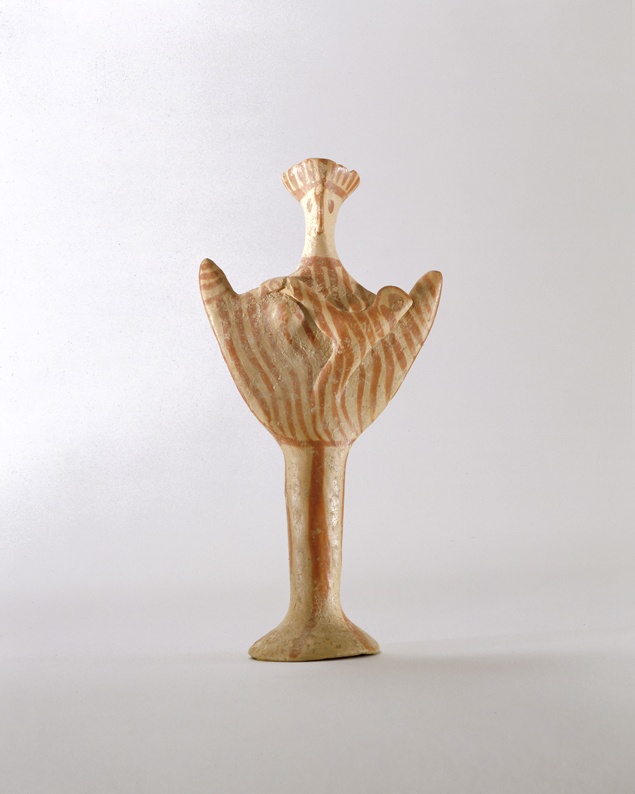
Terracotta
H: 12.8 cm
Provenance: no indication; Central Greece?
Late Mycenaean III B?
14th-13th century B.C.?
Ex collection: Mr and Mrs Frederick Stafford
Modelled by hand, the long tress and the child added in strips, with the help of a spatula-like instrument (a thumb-nail?); the whole smoothed with the help of a brush.
Condition: light chamois colour clay, polished and with traces of earth.
Painted decoration in red of undulating and linear strips and short strokes on her polos and tress.
The purpose of these clay objects, whether they be Kourotrophoi, figurines, thrones or animals is uncertain. Since they were found all over settlements: in tombs, mostly children's (in which case they probably represent toys), and the larger figures with cylindrical bodies in cult contexts, etc., we may surmise that their function depended on their ultimate use.
It is also most likely that the Mycenaeans gave religious meaning [1] to the objects that accompanied the deceased in their tombs.
A rare type (only two other complete examples known). The mother is PSI-type, i.e. with both arms upraised; her child hanging on her breast, not held. The bird-like face surmounted by a concave-topped polos behind which hangs a long tress. Her tubular body flares at the foot.
It is generally thought that the PSI-type is a goddess, evolving from Minoan cult figures. The PHI-type is thought to be a nurse, and it may be that the upraised arms of our figurine are simply the consequence of the combination of one popular form with a less appropriate function - holding a child.
The Kourotrophos probably represents a mother goddess.
Exhibited and Published:
Odyssey of an Art Collector, no. 8, p. 8 ill.
Archaeology Glossary
1 See further, cat. no. 66 with footnote 3.